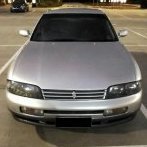Head Temperature
Announcements
-
Similar Content
-
Latest Posts
-
By GabsReDeal · Posted
Here are a few pictures for those interested. These where taken shortly after some rain. -
I don't run the spring but it means you need to set your own belt tension. I put tensioners on both sides too.
-
By CarExplore.com.au · Posted
Hi soviet_merlin, We appreciate your concern regarding this possibly being some sort of PR/Political hype, I assure you that is not the case, I wish we could claim something like that, but in this case, we merely reached out for comment on the basis of the outrage we too felt, as those heavily in the automotive industry. Ps. the original source in the social media post is CarExpert not CarExplore. Best, CE. -
By BourneToLive · Posted
Made a bit of a discovery, but while I was cruising, I randomly decided to test to see if it worked and it showed up on my IC7. The entire time I tested it before, I never thought to turn the ignition on. I only tested it with head lights turned on but with the ignition off. Huge oversight on my end. I’m a dummy. I know.
-






Recommended Posts
Create an account or sign in to comment
You need to be a member in order to leave a comment
Create an account
Sign up for a new account in our community. It's easy!
Register a new accountSign in
Already have an account? Sign in here.
Sign In Now